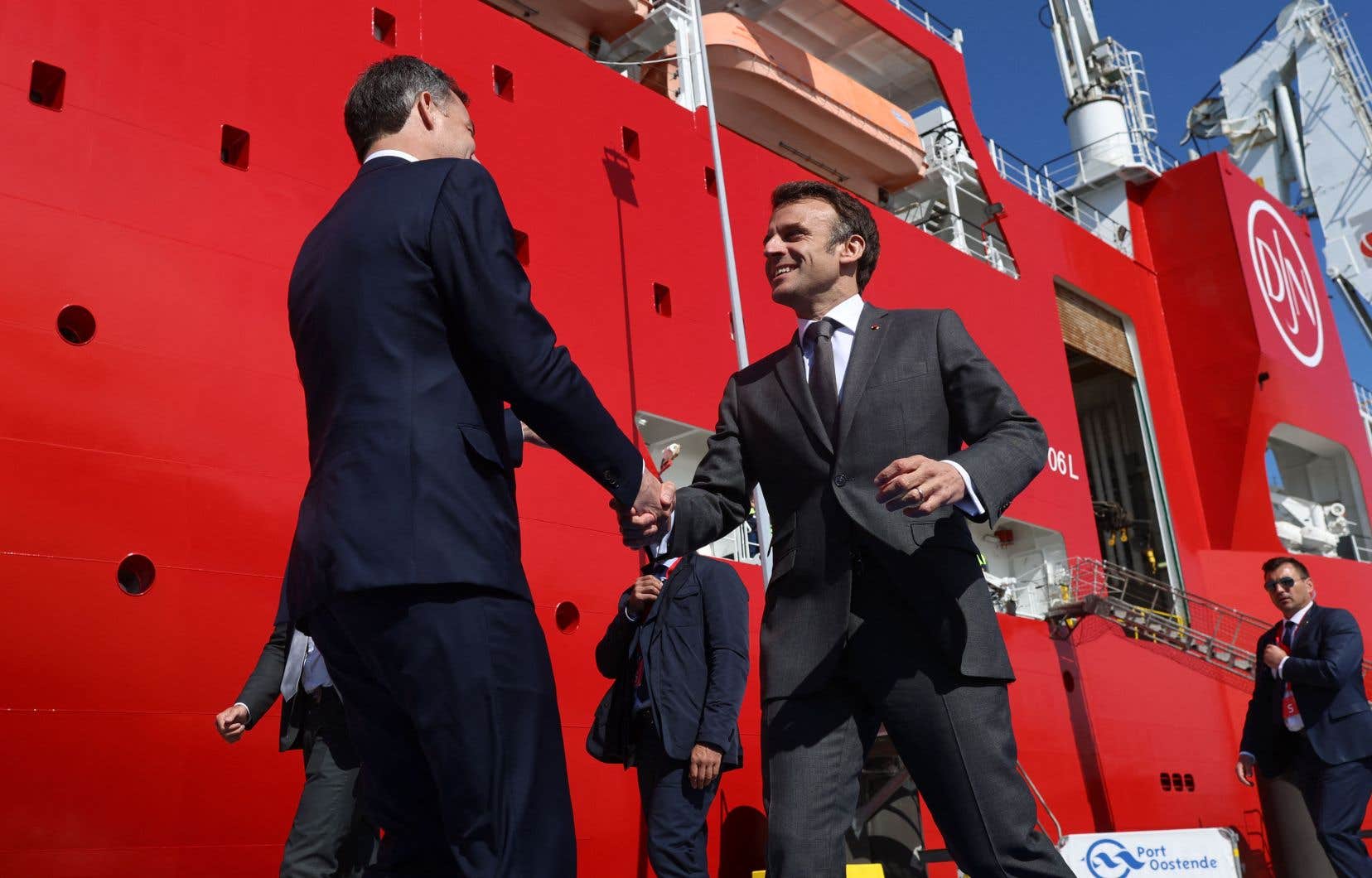A summit brings together nine European countries in Belgium on Monday to seal their common ambition to increase their wind turbine capacities tenfold in the North Sea, a colossal industrial challenge to accelerate the decarbonization of the continent.
The Ostend meeting, where French President Emmanuel Macron, German Chancellor Olaf Scholz and Dutch Prime Minister Mark Rutte will meet, aims to develop wind farms, connection infrastructure, industrial chains, green hydrogen projects, etc.
“Our common goal for wind power in the North Sea is 120 gigawatts in 2030, and at least 300 GW in 2050,” the leaders of the nine countries said in a column published Monday by the site. Politico. The current cumulative capacities are around 30 GW.
“Our path is clear. It is now a question of accelerating the rhythm”, they sum up. In practice, they want to speed up authorization procedures, better coordinate calls for tenders, “reinforce” production chains, diversify supplies of critical components to reduce their dependence on China…
The leaders of seven countries of the European Union (France, Germany, the Netherlands, Belgium, Ireland, Denmark and Luxembourg – a major funder of projects), Norway and the United Kingdom will be present.
If the United Kingdom has 14 GW of offshore wind power and Germany 8 GW, the capacities of Denmark, Belgium and the Netherlands are between 2 and 3 GW, and those in France and Norway at around 0.5 only.
“The orders of magnitude are gigantic […] Offshore wind power will probably become the main source of renewable energy production, far ahead of solar and onshore wind power, ”we observe at the Élysée.
In the shallow North Sea, wind turbines “can be installed in large numbers” not too far from the coast, “under wind conditions allowing the production of a lot of green energy” at a “particularly competitive” cost, adds the same source.
France is aiming for 40 gigawatts of offshore wind power in service by 2050 on all coasts.
Colossal investments
After a first meeting of four countries in May 2022, this second “North Sea summit” is part of Europe’s climate objectives as well as the desire to cut its dependence on imported fossil fuels following the war in Ukraine.
The EU recently agreed to double, to 42.5%, the share of renewables in its energy consumption by 2030, in particular by speeding up the authorization procedures for infrastructures. Brussels also offered regulatory relief for green industries in mid-March.
However, to achieve the Ostend objectives, “major new investments are needed in production capacity and supporting infrastructure […] The planned policies are insufficient for the moment”, reacted in a joint statement about a hundred companies in the sector.
Nacelles, blades, cables… “Europe has technological and industrial leadership in offshore wind power, but does not produce enough of certain crucial elements. A lot of funding is already going to innovation, the challenge is to invest in existing production structures whose capacity must be doubled, tripled, ”explained to AFP Pierre Tardieu of the industrial federation WindEurope.
European industry should thus manufacture within five years the equivalent of 20 GW of offshore wind turbines per year, against a capacity of approximately 7 currently… at the risk of saturated factories and bottlenecks on the components.
“The turbine manufacturers are currently operating at a loss, hard hit by the logistical disruptions following [de la] COVID, we need punctual public support”, insists Mr. Tardieu, also noting the massive needs for training and recruitment: offshore wind power will require 250,000 jobs in 2030, against 80,000 today.
The total cost promises to be colossal: at the end of 2020, Brussels estimated the investment needs at 800 billion euros if the EU aimed for 300 GW of offshore wind power by 2050.
Environmental NGOs call for them not to rush impact studies on marine biodiversity, and WindEurope points out the constraints linked to fishing and transport.
“But to achieve these wind turbine objectives, we only need between 7% to 10% of the maritime basin”, tempers Pierre Tardieu.
